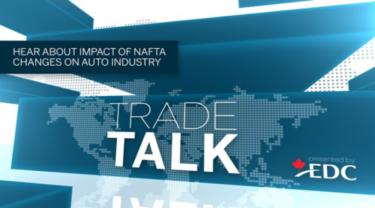During the inaugural bilateral meeting between Prime Minister Trudeau and President Trump February 13, the U.S. President said his intention is to “tweak” NAFTA, as far as Canada is concerned.
“We’ll be tweaking it. We’ll be doing certain things that are going to benefit both of our countries. Our relationship with Canada is outstanding,” Trump said during the press conference.
But what does that mean exactly? And how will changes impact the auto sector, the most integrated industry in North America?
EDC asked one of Canada’s foremost trade experts, international trade lawyer, Lawrence Herman of Herman Associates, what changes to NAFTA would mean for the Canadian auto industry – an industry that accounted for $77 billion in exports in 2015, which translates into 12 per cent of Canada’s total trade.

